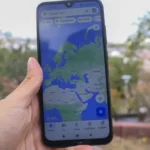Using the Google Maps Places Library can greatly enhance your web applications by providing detailed location information. In this article, we’ll explain strategies to effectively use the Google Maps Places Library in JavaScript. This guide will help you create dynamic, user-friendly web applications that utilize the full potential of this powerful tool.
Understanding the Google Maps Places Library
The Google Maps Places Library is a service that allows you to access a vast amount of location-based information. This includes details about places like names, addresses, phone numbers, ratings, reviews, and types of businesses. This information can be incredibly valuable for applications that need to provide users with relevant local data.

Setting Up Your API Key
Before you start using the Google Places Library, you need to set up an API key. This key authenticates your requests to the Google Maps API.
- Go to the Google Cloud Platform Console and navigate to the API & Services dashboard.
- Create a new project if you don’t have one already.
- Enable the Places API by finding it in the library and enabling it for your project.
- Generate an API key in the credentials section.
Integrating the Places Library
Once you have your API key, you can integrate the Google Maps Places Library into your JavaScript code. This integration allows your application to retrieve and display location information based on user inputs or predefined locations.
Retrieving Place Details
One of the key features of the Google Places Library is the ability to retrieve detailed information about specific places. You can get details like the name, address, phone number, website, rating, and reviews of a place. This can be useful for applications like travel guides, local business directories, and review sites.
Handling User Input
Your application can also allow users to search for places based on their input. The Google Maps Places Library provides autocomplete functionality, which suggests places as users type in a search box. This improves user experience by providing instant, relevant suggestions.
Displaying Places on a Map
Integrating the Google Places Library with the Google Maps JavaScript API allows you to display places on a map. You can show markers for various places and provide additional information in info windows. This visualization makes it easier for users to understand the location and context of the places.
Filtering Places
You can filter places based on specific criteria such as type, location, and radius. This allows you to customize the results to meet the needs of your application. For example, you can filter results to show only restaurants within a certain radius of the user’s location.
Using Place Photos
The Google Maps Places Library also provides access to photos of places. You can use these photos to enhance the visual appeal of your application. Displaying photos gives users a better idea of what to expect at a location.
Optimizing Performance
To ensure your application runs smoothly, it’s important to optimize the use of the Google Places Library. Here are some tips:
- Batch requests: Group multiple requests together to reduce the number of API calls.
- Caching: Cache frequently accessed data to minimize redundant API requests.
- Error handling: Implement robust error handling to manage potential issues with API responses.
Combining with Other APIs
For instance, you can use the Directions API to provide routes to places or the Geocoding API to convert addresses to geographic coordinates.
Providing User Reviews
Integrating user reviews into your application can provide valuable insights for users. The Google Places Library allows you to display reviews and ratings, helping users make informed decisions about places.
Enhancing User Experience
Using the Google Places Library enhances user experience by providing accurate and up-to-date information. This makes your application more useful and engaging, leading to higher user satisfaction.
Conclusion
The Google Maps Places Library is a powerful tool for developers, offering a wealth of location-based information that can significantly enhance web applications. By understanding how to integrate and use this library effectively, you can create dynamic, informative, and user-friendly applications that stand out. Whether you are displaying place details, photos, or user reviews, these strategies will help you make the most of the Google Places Library.











